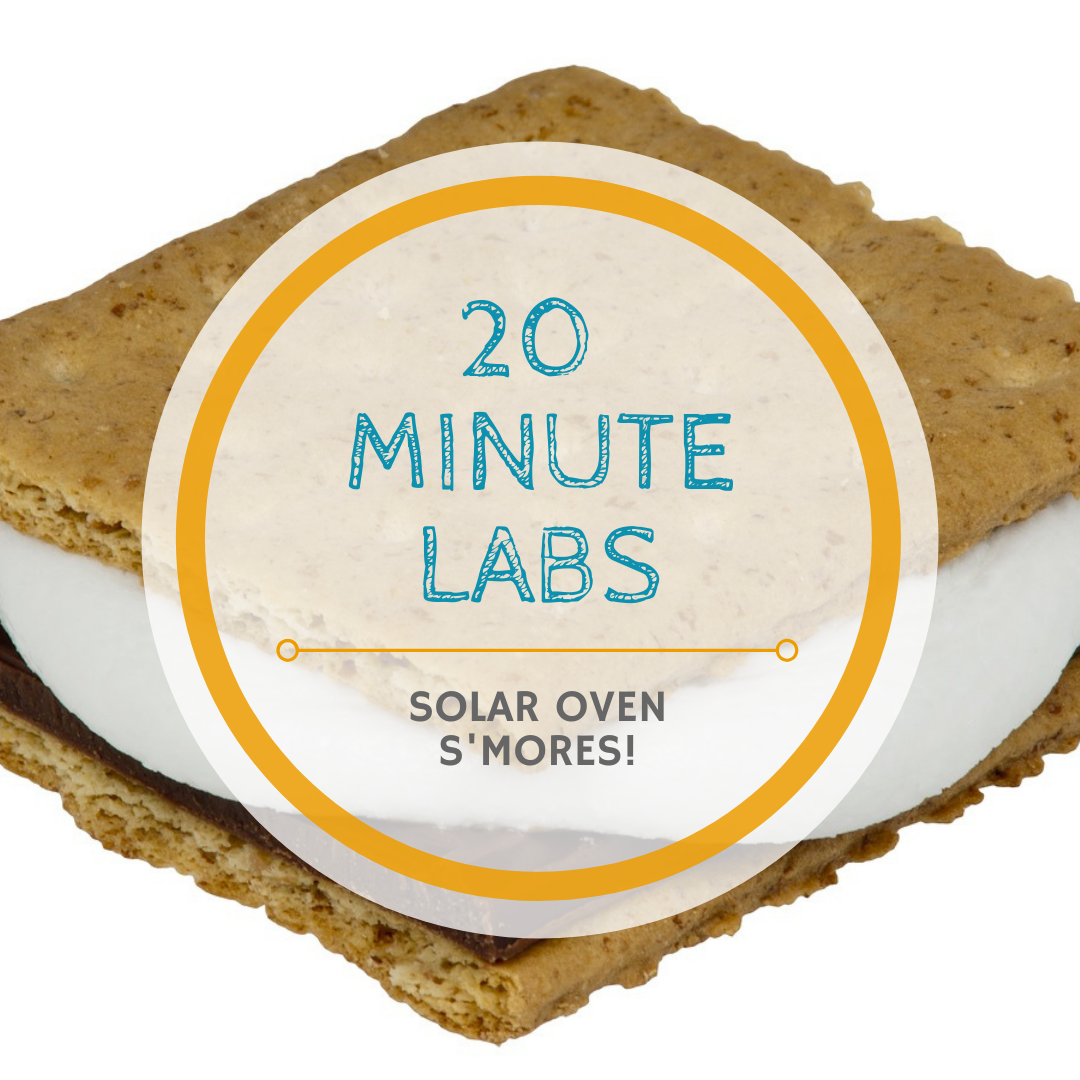20 Minute Labs: Solar Oven S'mores

CAPTURE THE HEAT OF THE SUN!

Have you ever eaten s'mores? They're a fun summer tradition combining three tasty treats: graham crackers, marshmallows, and chocolate. Usually they're made by toasting a marshmallow over a campfire until it gets gooey, then sandwiching it between crackers and chocolate!
What if you could make s'mores without having to first build a campfire?
Have you ever baked bread or a cake? You need an oven to do that. Did you know you can make your own oven using just the power of the sun? No electricity needed! The sun is, after all, a sphere of burning gases that keeps our planet from freezing in the very cold galaxy!
 In this month's 20 Minute Lab, we'll make a solar-powered oven from stuff around the house and heat up our own s'mores! A perfect summertime experiment.
In this month's 20 Minute Lab, we'll make a solar-powered oven from stuff around the house and heat up our own s'mores! A perfect summertime experiment. WHAT YOU'LL NEED
-
personal size pizza box (or omething similar)

- scissors
markers/crayons (optional) - black construction paper or fabric
- glue stick
- aluminum foil
- plastic wrap
- tape
- graham crackers
- marshmallows
- chocolate bar
- stick (or skewer or pencil)
LET'S GET STARTED!
- First, make three cuts into the lid of the pizza box to create a large 'oven door', leaving the fourth side as a 'hinge', simply bending it to open (see photos below).

- If you'd like, you can decorate the top of your box with markers and crayons! (If your box has a logo, you might glue a piece of paper on the door before decorating.)
- Glue or tape aluminum foil to the underside of door.
- Next glue the black paper to the bottom inside of the box.
- Then tape plastic wrap on the inside of the lid, across the opening to create a seal.

- Place graham cracker squares on top of the black paper inside the box, then place a marshmallow and piece of chocolate on top. (You can put the marshmallow on top instead, but we found it fun to see the chocolate melt everywhere!)
- Close the lid to the box.
-
Place the box in the sun and prop up the door with the stick so that it is held open at an angle above the s'mores.

-
Bonus Fun: Place a thermometer inside the oven to see how hot it gets! (You can use the one from your Foundation Chemistry Kit, or one you have at home). Compare the temperature to what it is outside the oven. (Or check the outdoor temperature on a weather app.) You might want to jot down the two temperatures to compare!
- Depending on the outdoor temperature, you'll likely need to wait 30 minutes to an hour. Check in occasionally to see the progress. You'll know things are happening when the chocolate starts to melt!

WHAT'S GOING ON?

Sure, you could have just put your smores out in the sun and they'd melt eventually, but creating the 'oven' makes it go a lot faster! Why? Well, we added some elements to help make the most all the sun's heat.
For one, you put your smores into a closed container - cardboard all around, and plastic wrap on top. The plastic wrap let the heat from the sun enter the box, but trapped the warmed-up air inside - no breeze could blow it away.

Aluminum foil is a shiny, reflective material. Putting it on the underside of the door allowed it to bounce heat from the sun back toward the s'mores inside the 'oven'! This is also why emergency blankets (sometimes called 'space blankets') are often made with aluminum-covered material, to reflect the heat of your own body back to you to keep you warm.

Black objects absorb light and heat, while white objects, reflect light and heat. If two people are in the sunshine, one wearing a white shirt and one a black shirt, the person with the white shirt will stay cooler than the person with the black shirt! In this same way, putting the black paper on the bottom of the box helped to heat up the inside of the oven even more because of the heat it absorbed.
SHARE WITH US!
Let us know how your experiments turned out! Share your photos and results with us on Facebook, Twitter, Instagram, or send us an email to info@yellow-scope.com. We love getting your messages!
For more exciting experiments, check out our Yellow Scope science kits on the Shop tab of our website!



Chelsea Schuyler
Author